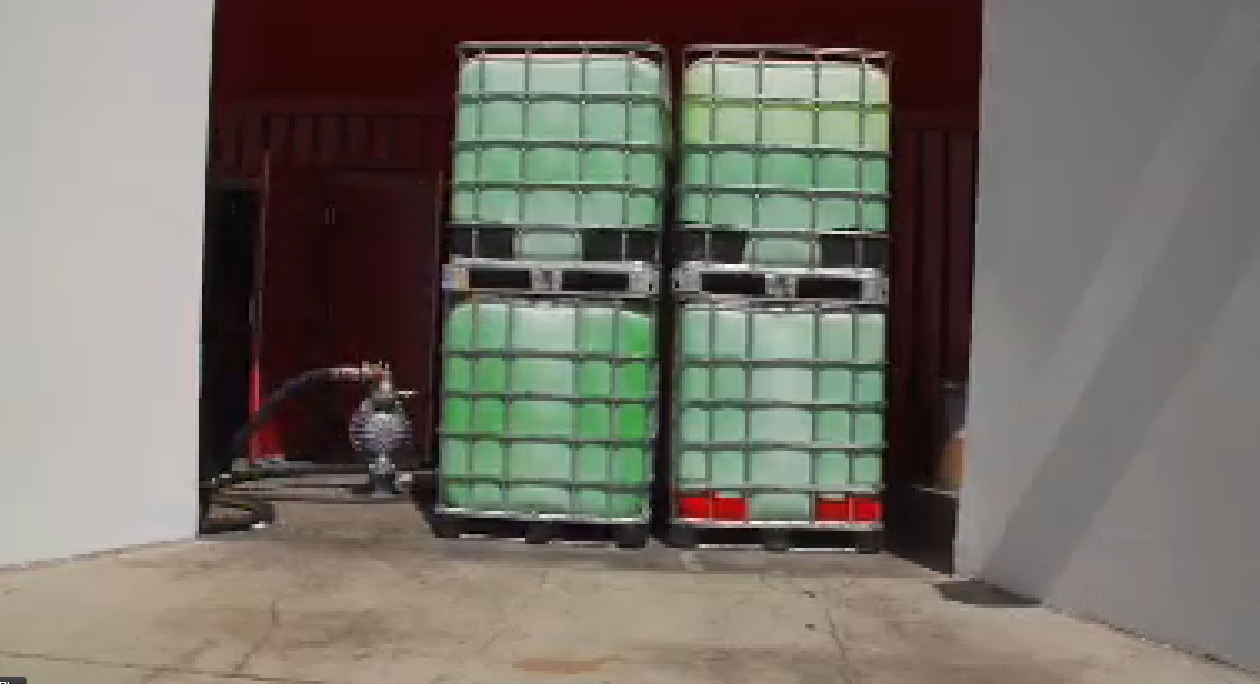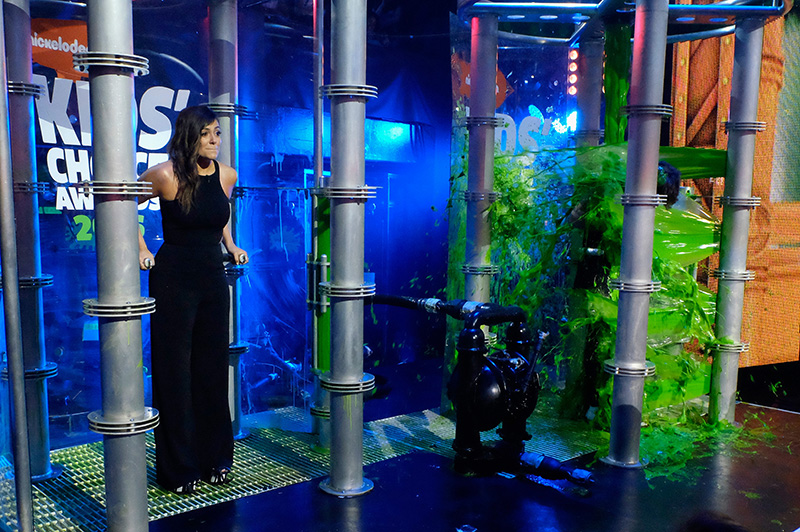Pumping Gunge, Goo and Slime
The pumping of viscous fluids such as slime can be quite problematic, and won’t be particularly easy to achieve with common pumps, on this page I will cover possible options that may be available to you if you want to pump goo.
Pumping Goo
Centrifugal
Pumps
Most commonly available electric and petrol pumps (submersible pumps,
windscreen washer pumps, pool pumps) are centrifugal types.
Centrifugal Pump and Impellor
Centrifugal pumps consist of a disc
with vanes on, known as an impellor, rotated by the power source
(motor, engine etc.) The inlet is arranged at the centre of the disc
and the outlet at the edge. This type of pump is simple to manufacture
and efficient for fluids such as water, but generally does not work
effectively with more viscous fluids, and needs priming; prefilling
with the fluid being pumped to get them started. Many centrifugal pumps
also do not cope well with lumps- this is dependent on the impeller and
case design. You may have some success if your slime is very runny, or
using a pump intended for dirty water use (such as a submersible pump).
A notable example of where a
centrifugal pump is used, is ‘Life in Color’ to pump paint over the
people visiting their events. A good image of this can be found in
their Flickr photostream; Life
in Color From their photostream it can be seen that they mix
in water to keep the viscosity down, as well as ensuring that their
paint is well mixed.
There are a number of other types of
pump available that are more suited to viscous fluids, but are less
widely available;
Displacement
Pump
These use a reciprocating piston (like a bicycle pump or stirrup pump)
and can achieve very high pressures, but often at low flow rate. They
are used in items such as pressure washers. I am not aware of any
readily available powered pumps of this type suitable for use with
gunge, but you could use some of the hand pumps of this type that are
available (some water pistols are of this type).
These consist of a pair of ‘gears’ meshed inside a case- they are
common for oil pumps in car engines and hydraulic systems amongst
others. I am not aware of any readily available pumps of this type
suitable for use with gunge.
Peristaltic
Pumps
This type uses a tube squeezed by rollers to move fluid. They can be
very accurate at dispensing a set volume of liquid so are commonly used
in medical and laboratory equipment, as well as in dosing chemicals in
applications such as commercial dishwashers and aquariums. They are
typically small, and move very low volumes of liquids (up to 100mls/min
range). I am not aware of any readily available pumps suitable for use
with gunge in any usable volume.
Peristaltic Pump- Complete and with cover removed
Diaphragm
Pumps
A diaphragm pump works by the movement of a rubber diaphragm inside a
pump chamber. This can either be driven mechanically by hand, motor or
engine, or by use of a gas such as air or Carbon Dioxide. They are
usually self-priming and to a certain extent can cope with particles/
lumps. In my opinion this type are most suited to the general pumping
of goo. It is worth noting that by their nature the output of the pump
tends to pulse, so they may not be suitable for an even flow. If they
contain two chambers, they are double acting and do not suffer the
pulsing anywhere near as much.
Internal Diaphragm Including Valves
Hand Diaphragm Pumps- Bilge & Site Pumps
Small low voltage diaphragm pumps are commonly used in boats, caravans,
RVs etc for pumping fresh water. These don’t appear to be particularly
suitable due to their small size, similarly sized Carbon dioxide
powered units are often used in drinks dispensing
applications.
Electric and Carbon Dioxide Gas Powered Pumps
There are larger electric versions
sold as marine shower or toilet drain pumps which are much more
suitable for our uses, an indeed is what I use. Common makes include
Whale and Jabsco.
Whale Gulper Shower Pump
Mounted for Easy Connection
Typical Air Operated Double Diaphraghm (AODD) Pump, a 3/8" Graco Husky, I use for pumping slime


Air Diaphragm Pumps in use for Nickelodeon Kids Choice Awards-
These are 2-3" Units
Air
Pressure
An effective method of moving gunge in limited quantities is to use air
pressure to pressurise an enclosure containing the gunge- the easiest
method is probably to use a fire extinguisher. Many modern
extinguishers use a Schrader valve to enable filling the air and so can
easily be hooked up to a foot pump or compressor to refill. The output
hose is usually fitted with a standard thread, and so can be easily
swapped out with other output hoses. I have used this method on a
number of occasions- It is particularly good when you need accurate
control of timing, but are away from power. I have painted my
extinguishers used for this purple so they are clearly not an active
piece of fire fighting kit.
Goo Extinguisher
The quoted flow rates for a pump
(volume pumped in set time, typically in litres or gallons per minute)
are usually based on using water at a defined head (height the water is
pumped up). Although manufacturers will usually publish tables or
charts as to how the flow varies with head, flow rates will be
significantly less than quoted for water when used with a more viscous
fluid. It is worth bearing this in mind when selecting a pump, and
indeed in carrying out trials.